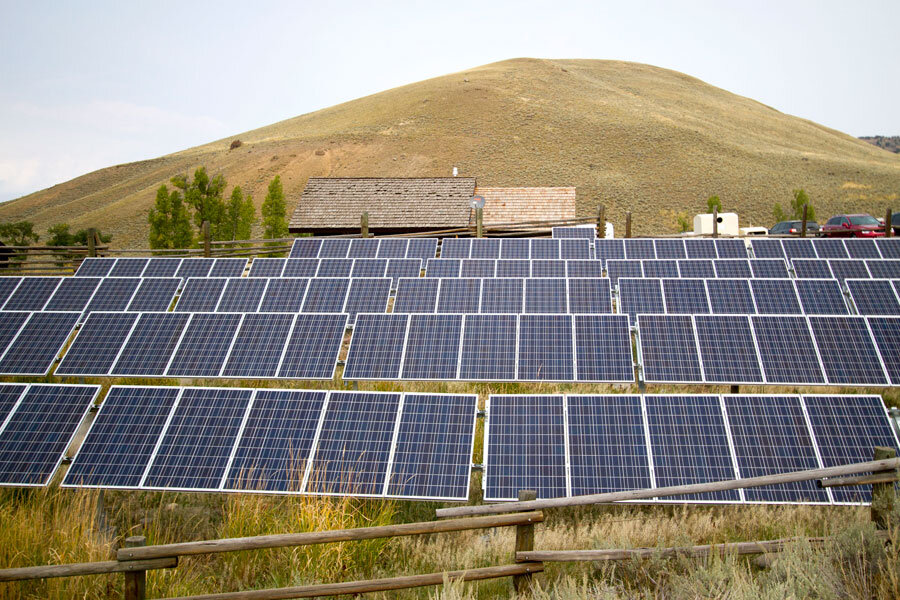Is 100 percent renewable energy possible by 2050? Greenpeace says yes.
Loading...
Environmental activist organization Greenpeace published its most recent "Energy Revolution" Sunday, the latest of a series of annual surveys dating back to 2005. In this latest analysis, Greenpeace Senior Advisor Dr. Sven Teske suggests 100 percent renewable energy is possible on a global scale by 2050.
The prediction sounds idealistic, but in the past equally dramatic Greenpeace predictions have proven accurate. In fact, the US-based Meister Consultants Group concluded earlier this year that “the world’s biggest energy agencies, financial institutions and fossil fuel companies for the most part seriously under-estimated just how fast the clean power sector could and would grow,” whereas Greenpeace did not.
So why are Greenpeace’s predictions so accurate?
“We do a detailed renewable market analysis and we work with [both] scientific institutions and the renewable industry,” Dr. Teske told The Christian Science Monitor. “We do a neutral technology assessment, without ideologically [disputed] technologies such as carbon capture and storage (CCS) and nuclear.”
“We focus on what existing renewable energy technologies can achieve independent of political agendas,” Emily Rochon, a climate campaigner with Greenpeace International, further explained to The Christian Science Monitor. “As such, our reports deliver the most aggressive (and what has turned out to be the most accurate) assessment of the capacity of renewable energy to power our economies.”
And the main finding of the report includes another positive projection: more renewables, predicts the Greenpeace survey, will mean more jobs.
“At every stage in the transition to 100% renewable energy, there are more energy sector jobs,” explains the Energy Revolution 2015. Solar PV is expected to provide 9.7 million jobs, and wind power is expected to provide 7.8 million. And the projected 20 million jobs coming from renewables are far more than the coal, gas, and oil industries today combined. So although the International Energy Agency predicts the number of jobs to fall after 2020, the Energy Revolution report expects the number of jobs to increase between now and then.
Greenpeace says world leaders preparing for Paris should take this report seriously when considering appropriate future fossil fuel investments and what they could mean for the job market.
“Every dollar invested in new fossil fuel projects is high risk capital which could end up as a stranded investment,” explains Teske in a Greenpeace press release. “The solar and wind industries have come of age, and are now cost competitive with coal. It is very likely they will overtake the coal industry in terms of jobs and energy supplied within the next decade.”
So although the effects on the job market are encouraging, work remains to be done, especially in Paris.
“There is a great deal of money and inertia invested in preserving the status quo,” explains Ms. Rochon. Instead of investing in renewable as an opportunity rather than a threat, utilities “are spending lots of money trying to convince politicians and others that renewable energy is expensive, unproven ...”
Serious investments – about $1 trillion a year until 2050 – are needed to fulfill these energy expectations. This is a jaw-dropping figure, but Greenpeace says it’s important to remember that the savings from a non-fuel renewable energy future are even greater: around $1.07 trillion a year.
“I urge all those who say ‘it can’t be done’ to read this report and recognize that it can be done and it must be done for the benefit of people around the world,” says Greenpeace International Executive Director Kumi Naidoo.







